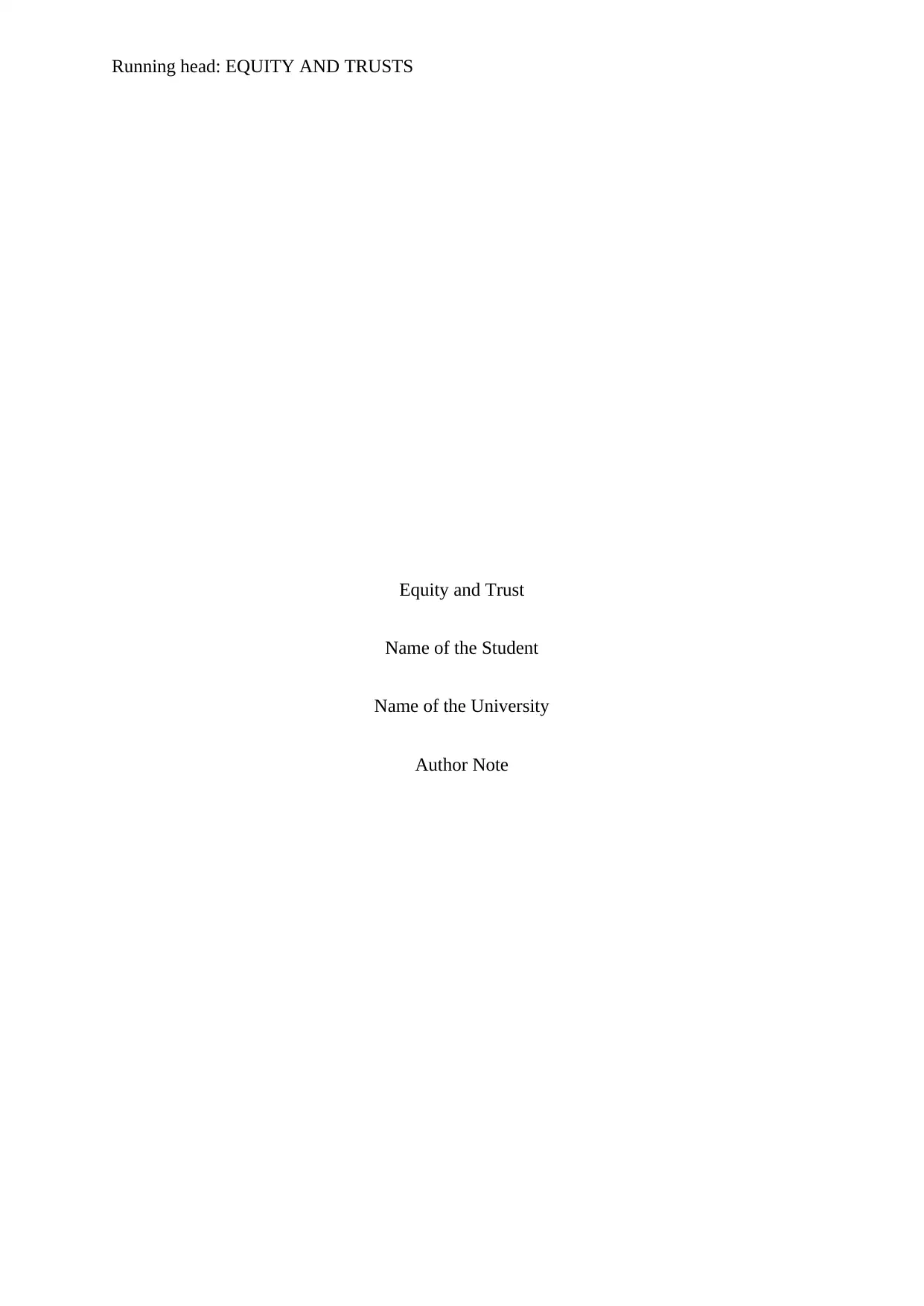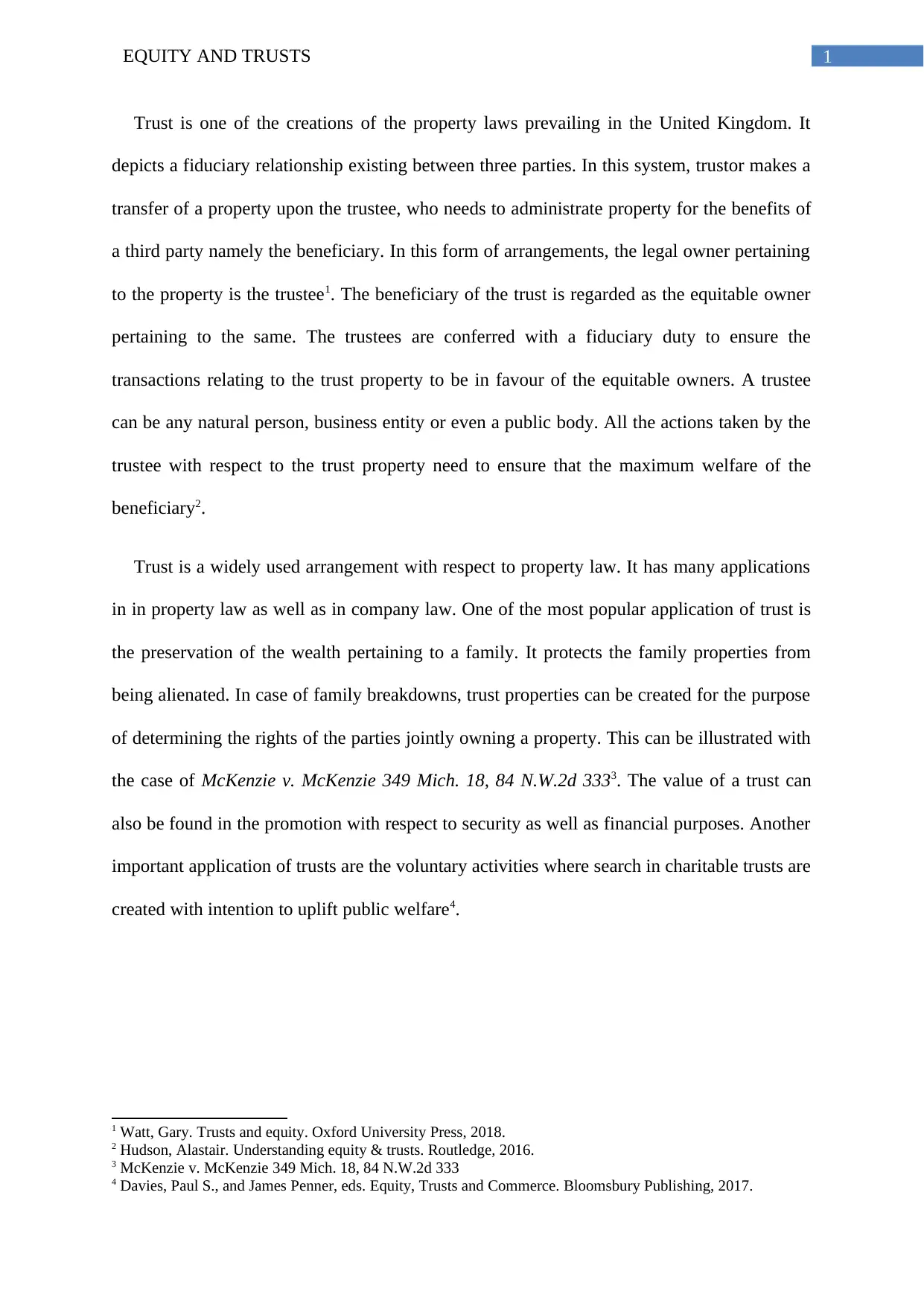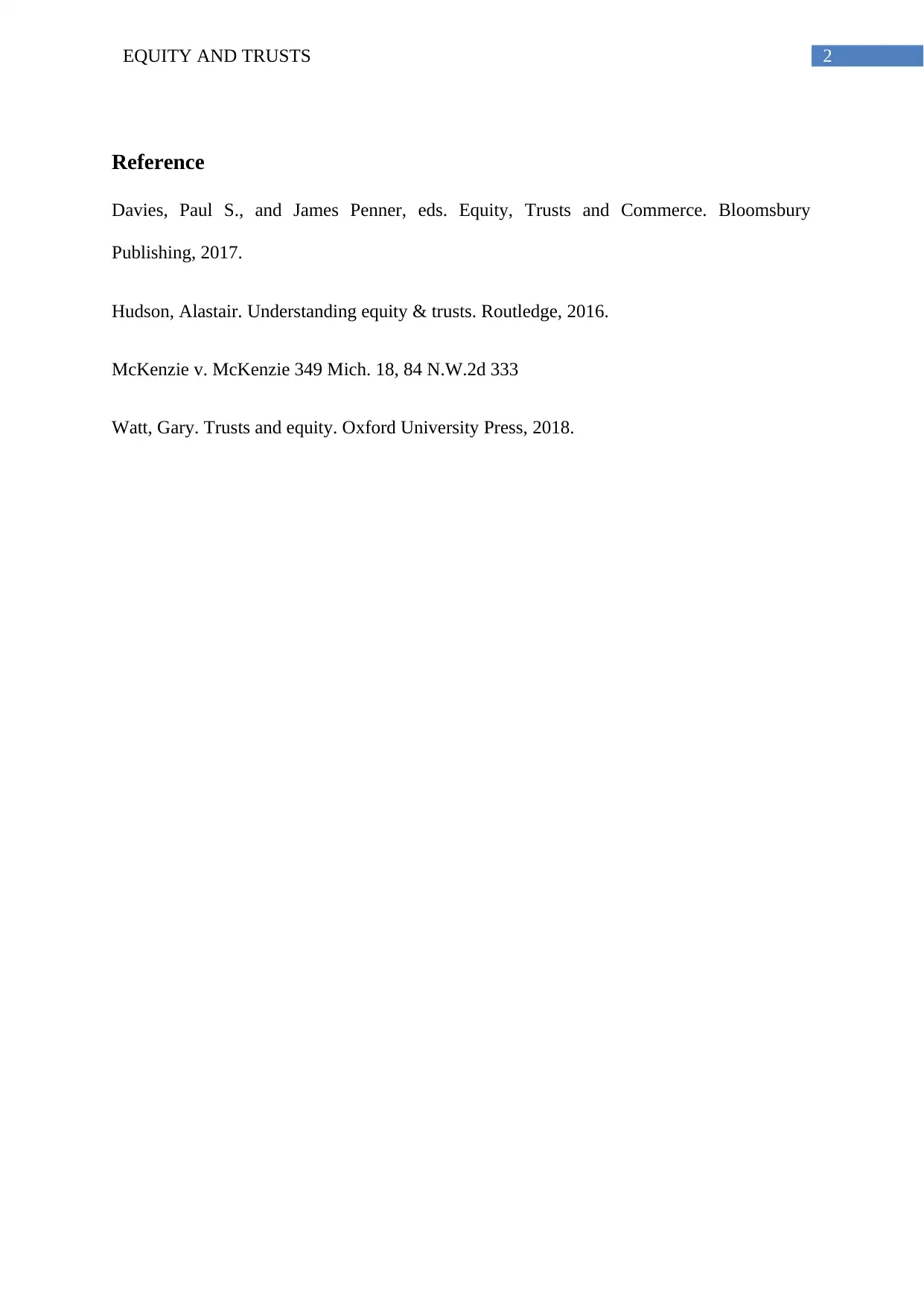Equity and Trusts: Examining Trust Structures and Applications
VerifiedAdded on 2022/09/18
|3
|388
|22
Report
AI Summary
This report delves into the definition and applications of trusts within the framework of property law, specifically in the UK context. It explains the nature of a trust as a fiduciary relationship involving a trustor, trustee, and beneficiary, outlining the duties of the trustee to manage property for the benefit of the beneficiary. The report highlights the legal ownership of the trustee and the equitable ownership of the beneficiary. It further explores the various applications of trusts, including wealth preservation, family property arrangements, and charitable purposes, referencing relevant case law such as McKenzie v. McKenzie and academic sources like Davies, Penner, Hudson, and Watt. The report emphasizes the importance of trusts in safeguarding family assets and promoting public welfare, providing a comprehensive overview of trust structures and their significance in legal and financial contexts.
1 out of 3





![[object Object]](/_next/static/media/star-bottom.7253800d.svg)